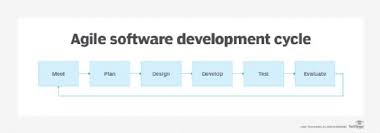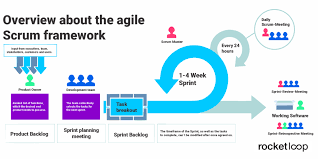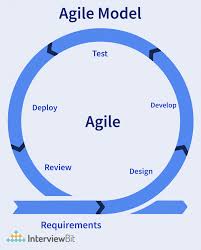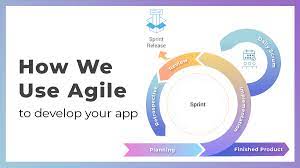The Benefits of Agile Development in Software Engineering
Agile development has become a popular approach in software engineering due to its numerous benefits. Agile methodology focuses on iterative development, where software is developed incrementally in short cycles known as sprints. This approach allows for greater flexibility, collaboration, and responsiveness to change throughout the development process.
One of the key benefits of agile development is its ability to adapt to changing requirements. In traditional waterfall development, requirements are often fixed at the beginning of a project, making it difficult to accommodate changes later on. Agile development, on the other hand, allows for requirements to evolve over time, enabling teams to respond quickly to feedback and changing market conditions.
Another benefit of agile development is improved collaboration among team members. By working in cross-functional teams and holding regular stand-up meetings, agile teams can communicate more effectively and address issues as they arise. This leads to increased productivity and higher quality software.
Agile development also promotes greater customer satisfaction by delivering working software early and frequently. Through continuous integration and testing, agile teams can ensure that the software meets customer expectations and can make adjustments as needed throughout the development process.
In conclusion, agile development offers numerous benefits for software engineering teams looking to improve their processes and deliver high-quality software more efficiently. By embracing agility, teams can adapt to change more easily, collaborate effectively, and ultimately deliver better products that meet customer needs.
8 Essential Tips for Effective Agile Development
- 1. Embrace change and welcome feedback throughout the development process.
- 2. Prioritize collaboration and communication among team members.
- 3. Break down tasks into smaller, manageable chunks for better efficiency.
- 4. Conduct regular retrospectives to reflect on what went well and what can be improved.
- 5. Encourage a culture of continuous improvement and learning within the team.
- 6. Empower team members to make decisions and take ownership of their work.
- 7. Use tools and technologies that support agile practices, such as Kanban boards or Scrum frameworks.
- 8. Focus on delivering value to the customer through iterative development cycles.
1. Embrace change and welcome feedback throughout the development process.
In agile development, it is essential to embrace change and welcome feedback throughout the development process. By being open to change and feedback, teams can adapt quickly to evolving requirements and address issues as they arise. This approach fosters a culture of continuous improvement, allowing for greater flexibility and responsiveness to customer needs. Embracing change and welcoming feedback not only leads to better collaboration within the team but also results in the delivery of high-quality software that meets customer expectations.
2. Prioritize collaboration and communication among team members.
Prioritizing collaboration and communication among team members is essential in agile development. By fostering open communication channels and encouraging teamwork, agile teams can work more efficiently and effectively towards achieving their goals. Regular stand-up meetings, brainstorming sessions, and feedback loops help ensure that everyone is on the same page and working towards a common objective. Strong collaboration and communication not only improve team dynamics but also lead to better decision-making, problem-solving, and ultimately, the successful delivery of high-quality software products.
3. Break down tasks into smaller, manageable chunks for better efficiency.
Breaking down tasks into smaller, manageable chunks is a key tip in agile development that can significantly improve efficiency. By dividing larger tasks into smaller, more manageable pieces, teams can focus on completing one task at a time, leading to better organization and productivity. This approach also allows for easier tracking of progress and helps team members stay motivated as they achieve smaller milestones along the way. Ultimately, breaking down tasks in agile development enables teams to work more effectively and efficiently towards reaching their goals.
4. Conduct regular retrospectives to reflect on what went well and what can be improved.
In agile development, it is essential to conduct regular retrospectives to reflect on what went well and what can be improved. By taking the time to analyze past sprints or iterations, teams can identify successful practices to continue and areas that need enhancement. These retrospectives provide valuable insights for continuous improvement, fostering a culture of learning and adaptation within the team. By actively seeking feedback and reflecting on their work, agile teams can refine their processes, enhance collaboration, and ultimately deliver better results with each iteration.
5. Encourage a culture of continuous improvement and learning within the team.
Encouraging a culture of continuous improvement and learning within the team is crucial in agile development. By fostering an environment where team members are encouraged to learn from their experiences, share knowledge, and seek ways to enhance their skills, teams can continuously evolve and grow. This culture of continuous improvement not only helps individuals develop professionally but also benefits the team as a whole by promoting innovation, collaboration, and adaptability in the face of challenges. Embracing a mindset of ongoing learning and improvement can lead to increased productivity, higher quality output, and ultimately, more successful outcomes in agile development projects.
6. Empower team members to make decisions and take ownership of their work.
In agile development, empowering team members to make decisions and take ownership of their work is crucial for fostering a collaborative and efficient work environment. By giving team members the autonomy to make decisions related to their tasks and projects, they are more likely to feel invested in the outcome and motivated to deliver high-quality results. This sense of ownership can lead to increased accountability, creativity, and innovation within the team, ultimately contributing to the success of the project as a whole.
7. Use tools and technologies that support agile practices, such as Kanban boards or Scrum frameworks.
In agile development, it is essential to utilize tools and technologies that align with agile practices to enhance productivity and collaboration within the team. Incorporating tools like Kanban boards or Scrum frameworks can streamline project management, facilitate task prioritization, and improve communication among team members. By leveraging these tools, teams can effectively plan and track their work, visualize progress in real-time, and adapt to changing requirements more efficiently, ultimately leading to successful project outcomes in agile development.
8. Focus on delivering value to the customer through iterative development cycles.
In agile development, it is crucial to focus on delivering value to the customer through iterative development cycles. By breaking down the project into smaller, manageable increments and delivering working software at the end of each cycle, teams can gather feedback from customers early on and make necessary adjustments. This iterative approach ensures that the final product meets customer needs and expectations while allowing for flexibility to adapt to changing requirements throughout the development process.




